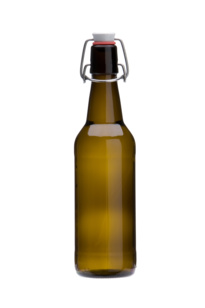
Container glass reduced by up to 50 percent.
For the first time, the industry is pursuing a common approach: 20 container glass manufacturers have mobilized their resources to successfully implement and finance this pilot project. "We are very proud to announce this joint industry project," comments Feve President Michel Giannuzzi. “Hybrid technology is fundamentally changing the way we produce. With it we can significantly reduce the CO 2 balance in container glass production. This step represents an important milestone for the glass industry in the implementation of our decarbonization strategy. "
Up to 300 t per day in any color
In many of their 150 Europe-wide glassworks, the industry is already working with electrical melting furnaces. However, these melting tanks are small and are used exclusively for the production of white glass from raw materials - recycled glass is hardly ever used. Thanks to the new technology, a glass trough can produce over 300 tons of glass in any color and use large quantities of recycled glass.
The Ardagh Group, the world's second largest manufacturer of container glass, has agreed to build the melting furnace in Germany. Construction will start in 2022 and an evaluation of the first results is planned for 2023. "With this new technology, we are on the way to climate-neutral glass packaging and guarantee long-term sustainable production," explains Martin Peterson, CEO of the Ardagh Group, Glass Europe. "We want to demonstrate the feasibility of electric melting on a commercial scale, which would revolutionize the container glass market."
The "melting furnace of the future" is an extremely ambitious project that requires considerable financial and human resources and a broad spectrum of specialist knowledge. For this reason, the industry has committed to working together. With its sectoral approach, it also wants to secure the support of the European Commission in the form of the ETS Innovation Fund. The project is of central importance, but not the only one the industry is currently dealing with: other approaches to clean production technologies and climate-neutral glass packaging have already been implemented or are being investigated.
about the project
Today, the use of electricity as the main source of energy in the container glass industry is limited to small melting tanks for white glass without the use of recycled glass. The new technologies would remove these restrictions. By replacing 80 percent natural gas with green electricity, the technology reduces the emissions from the melting furnace by 60 percent or around 50 percent of the total CO 2 emissions of a container glassworks.
For the first time ever, the project will bring together leading engineers from 20 container glass manufacturers to demonstrate the feasibility of the concept. With the technology, the industry can use large quantities of recycled glass, which is currently not possible with electric melting tanks. For every additional 10 percent recycled glass that is melted down in the melting furnace, an additional 5 percent in CO 2 emissions and 3 percent in energy consumption can be saved.
Due to its flexibility, the hybrid technology can switch to other energy sources in the event of supply bottlenecks, so that there are no production interruptions. The additional costs (investment and operating costs) of a hybrid melting furnace compared to a conventional melting furnace are estimated to be up to EUR 40 million over the 10-year lifespan of the melting furnace. The main reason for this is the higher electricity costs compared to natural gas (about three times as high per MWh).
About Feve
Feve is the association of European manufacturers of glass containers for food and beverages, perfume, cosmetics and pharmaceuticals. Its members produce 80 billion glass containers a year. The association has around 60 corporate members from around 20 independent corporate groups. Its 160 production sites are located in 23 European countries and include 125,000 direct and indirect jobs along the entire supply chain.






